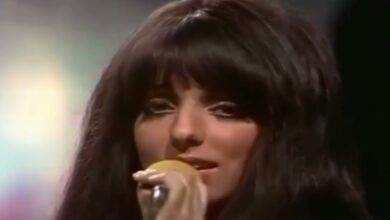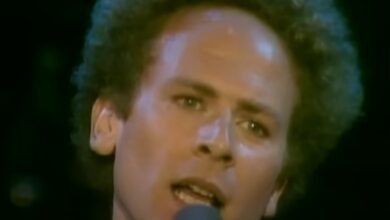Ray Stevens’ “Everything Is Beautiful” – A Timeless Anthem of Hope and Unity
Ray Stevens, widely known for his humorous novelty songs, surprised both critics and audiences in 1970 with the release of “Everything Is Beautiful.” The song was a heartfelt departure from his comedic roots, showcasing his depth as a songwriter and performer. Released as the lead single from his album of the same name, the track quickly soared to the top of the Billboard Hot 100, marking Stevens’ first No. 1 hit on the pop charts. It also topped the Adult Contemporary chart and earned him a Grammy Award for Best Male Pop Vocal Performance. More than just a commercial success, “Everything Is Beautiful” became an anthem for peace, tolerance, and acceptance, resonating with a divided world at the dawn of a new decade.
Before “Everything Is Beautiful,” Ray Stevens had built a career on witty, lighthearted songs that showcased his knack for storytelling and comedic timing. Born in 1939 in Georgia, Stevens began his music career in the late 1950s and gained recognition in the 1960s with hits like “Ahab the Arab” and “Gitarzan.” His sharp sense of humor and ability to blend country, pop, and novelty music set him apart. However, Stevens was more than just a comedic musician—he was a talented multi-instrumentalist, arranger, and producer, well-versed in a wide range of musical styles. His decision to release “Everything Is Beautiful” revealed a different side of his artistry, proving that he could craft deeply meaningful songs alongside his signature comedic work.
The inspiration for “Everything Is Beautiful” came when Stevens was asked to compose a theme song for his short-lived television show, The Ray Stevens Show, which aired in 1970. With a deadline looming, he sought to create a universally uplifting message that would resonate across different backgrounds and beliefs. The result was a song that emphasized the inherent beauty and worth of all people, regardless of race, religion, or status. The opening of the song, featuring a children’s choir singing “Jesus Loves the Little Children,” set the tone for the track’s message of unity and love. Stevens’ lyrics, delivered with sincerity and warmth, encouraged listeners to look beyond their differences and embrace the beauty in humanity.
The recording process for “Everything Is Beautiful” was carefully orchestrated to enhance its emotional depth. Stevens recorded the song at the legendary RCA Studio B in Nashville, known for its role in producing hits for Elvis Presley, Dolly Parton, and other country and pop icons. The inclusion of the children’s choir in the introduction was a deliberate choice, as Stevens wanted the innocence and purity of young voices to immediately establish the song’s theme. The arrangement built gradually, moving from the gentle choral introduction into Stevens’ soaring vocal performance, supported by rich instrumentation that blended gospel, pop, and orchestral elements. The result was a song that felt both personal and universal, a heartfelt plea for kindness wrapped in an unforgettable melody.
Upon its release, “Everything Is Beautiful” was met with widespread acclaim. It topped the Billboard Hot 100 for two weeks and remained in the Top 40 for several months, making it one of Stevens’ most successful singles. The song also reached No. 1 in Canada and became a major hit in multiple countries, proving its universal appeal. Critics praised Stevens for stepping outside his comedic comfort zone, commending the sincerity and uplifting nature of the track. His Grammy win for Best Male Pop Vocal Performance further cemented the song’s place in music history, marking a career-defining achievement for the singer-songwriter.
Beyond its chart success, “Everything Is Beautiful” made a significant cultural impact at a time when the world was grappling with social and political tensions. The Vietnam War, racial inequality, and generational divides defined much of the late 1960s and early 1970s, and Stevens’ message of inclusivity arrived as a soothing balm for troubled times. The song became a favorite at schools, churches, and public events, embraced by those looking for a message of unity amid division. Its success proved that music had the power to transcend boundaries and bring people together, a notion that still holds true today.
For Ray Stevens, “Everything Is Beautiful” marked a turning point in his career. While he continued to release comedic songs that delighted audiences, this song demonstrated his ability to connect with listeners on a deeply emotional level. It expanded his audience beyond those who appreciated his novelty tunes, earning him respect as a versatile musician capable of crafting poignant and meaningful works. The song also opened doors for Stevens to explore more diverse musical projects, including gospel and inspirational music, in the years that followed.
The song’s influence extended beyond Stevens himself, inspiring other artists to embrace themes of unity and acceptance in their own work. Many musicians across various genres have recorded their own renditions of “Everything Is Beautiful.” Notable covers include versions by Andy Williams and the Osmonds, each adding their unique touch while preserving the song’s heartfelt message. These interpretations helped keep the song’s spirit alive, ensuring that its core message continued to reach new generations.
Around the time of the song’s release, Stevens was experiencing a period of great professional momentum. His ability to pivot from novelty songs to profound ballads showcased his musical depth, and his career thrived as a result. While “Everything Is Beautiful” was his biggest pop hit, he remained a beloved figure in country and comedy music circles, continuing to release both humorous and serious songs well into the 21st century.
Decades after its release, “Everything Is Beautiful” remains one of Ray Stevens’ most beloved songs. It has been featured in numerous retrospectives of 1970s music and continues to receive airplay on classic hits and easy listening radio stations. The song’s hopeful message still resonates, particularly in times of societal unrest, proving that its themes of love and understanding are timeless.
As music continued to evolve, the lasting impact of “Everything Is Beautiful” could be seen in the way artists embraced socially conscious themes in their work. The song paved the way for future inspirational pop hits, showing that a song with a strong, positive message could achieve both commercial and critical success. It also demonstrated the power of an artist breaking away from their established style to take creative risks—something that would become increasingly common in the industry.
Even in later years, Ray Stevens was frequently honored for his contributions to music, with “Everything Is Beautiful” remaining a defining highlight of his career. The song has been performed at major events, celebrated in various media, and used as a rallying cry for unity and peace. It serves as a reminder that, no matter the era, music has the ability to heal, inspire, and bring people together.
More than fifty years after its release, “Everything Is Beautiful” continues to shine as one of the most uplifting and enduring songs of its time. Its message remains as relevant as ever, reminding listeners that kindness and acceptance will always have a place in the world. For Ray Stevens, it was more than just a hit song—it was a moment of musical transcendence that captured the best of what music can offer: hope, connection, and beauty.



